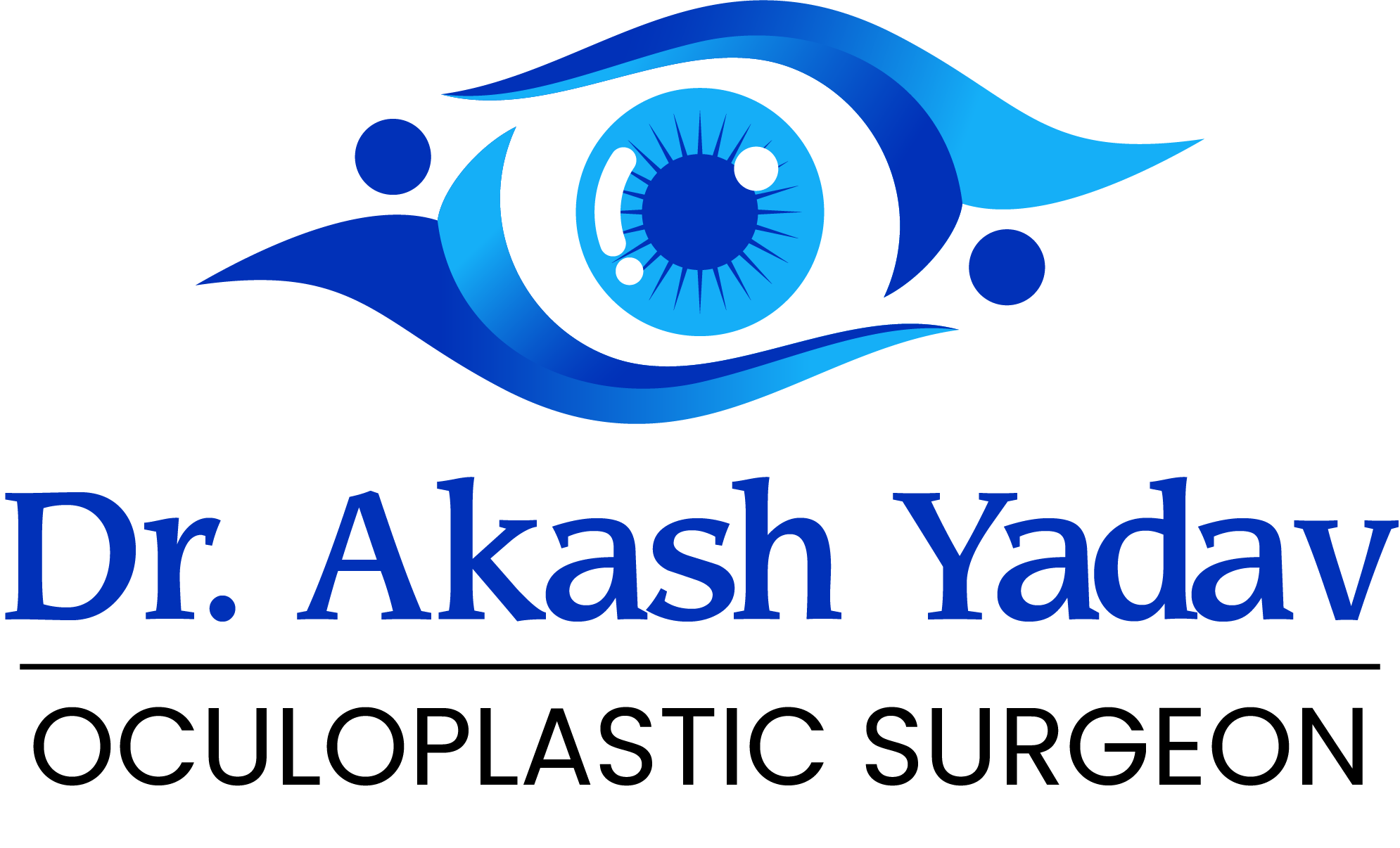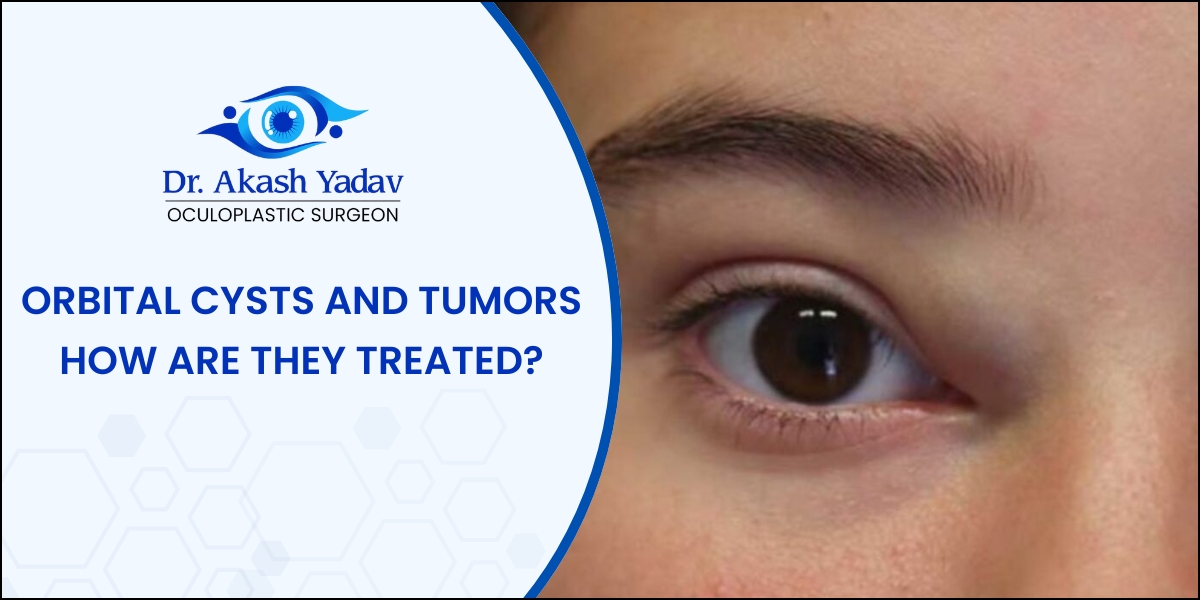What are orbital cysts and tumors? How are they treated?
The eye socket, medically known as the orbit, is the bony cavity that houses your eye, muscles, nerves, and blood vessels. When abnormal growths develop within this confined space, they are known as orbital cysts and tumors. While the words “cyst” or “tumor” can sound alarming, it’s crucial to understand that not all are cancerous. However, because the orbit is so compact, even non-cancerous growths can affect vision and eye health, making expert diagnosis and treatment essential.
This blog will help you understand the types of orbital masses, their symptoms, and the modern treatment options available, especially for patients seeking expert care in Pune.
Orbital Cysts vs. Tumors: What’s the Difference?
- Orbital Cysts: These are typically fluid-filled sacs. They are often non-cancerous (benign) and can be present from birth (congenital) or develop later. Common examples include dermoid cysts (which contain tissue like skin and hair) and mucoceles (cysts stemming from the sinuses).
- Orbital Tumors: These are solid masses. They can be either:
- Benign (Non-Cancerous): Such as cavernous hemangioma (a slow-growing vascular tumor) or meningioma (a tumor of the lining of the brain that can extend into the orbit).
- Malignant (Cancerous): These can be primary (originating in the orbit) or secondary (spreading from another cancer like breast or prostate). Examples include lymphoma, sarcoma, or optic nerve glioma.
Recognizing the Symptoms: When to See a Specialist
The symptoms of an orbital mass depend on its size, location, and type. Common signs include:
- Proptosis (Bulging Eye): The most common sign, where the eye is pushed forward.
- Double Vision (Diplopia): Caused by the mass restricting eye movement.
- Vision Changes: Blurred or loss of vision if the tumor presses on the optic nerve.
- A Visible Lump: A mass that can be felt or seen on the eyelid or around the eye.
- Pain or Pressure: A persistent feeling of discomfort in or behind the eye.
- Swelling or Redness: Unexplained inflammation around the eye.
If you experience any of these symptoms, it is critical to consult a specialist immediately. An Oculoplastic Surgeon is specifically trained to diagnose and manage such complex conditions affecting the eye and orbit.
How Are Orbital Cysts and Tumors Diagnosed and Treated?
1. Diagnosis:
A thorough evaluation is the first step. This includes a detailed eye examination, assessment of eye movement and vision, and imaging tests. High-resolution scans like a CT (Computed Tomography) or MRI (Magnetic Resonance Imaging) are invaluable. They provide a detailed view of the orbit’s structures, helping to pinpoint the location, size, and characteristics of the mass, which guides the treatment plan.
2. Treatment Options:
The treatment is highly personalized and depends on the diagnosis.
- Observation: Not all orbital masses require immediate intervention. Small, asymptomatic, and benign cysts or tumors may simply be monitored with regular scans and check-ups.
- Surgery: This is often the primary treatment for masses that are growing, causing symptoms, or are suspected to be malignant. The goal of Oculoplasty Surgery for these conditions is to remove the mass completely while preserving the eye’s function and structure. Advanced techniques, including endoscopic and minimally invasive approaches, are used to minimize scarring and improve recovery.
- Radiotherapy: Particularly effective for certain cancerous tumors like lymphoma, radiotherapy uses targeted radiation to shrink or destroy cancer cells.
- Chemotherapy: Used for malignant tumors that are sensitive to anti-cancer drugs, either as a standalone treatment or in conjunction with surgery or radiotherapy.
Seeking Expert Care in Pune
The management of orbital diseases requires a sophisticated level of skill due to the complex anatomy of the orbit. Choosing the right specialist is paramount for a successful outcome.
Consult Dr. Akash Yadav is a highly skilled Oculoplastic Surgeon in Pune specializing in the intricate field of orbital disorders. With extensive training and experience, Dr. Yadav offers comprehensive care—from accurate diagnosis using latest technology to performing delicate Oculoplasty Surgery in Pune.
Frequently Asked Questions About Orbital Cysts and Tumors
1. What is the most common symptom of an orbital tumor?
The most common symptom is proptosis, which is a forward bulging or displacement of the eye. Other frequent signs include double vision, blurred vision, and a noticeable lump.
2. Are orbital tumors usually cancerous?
No, the majority of orbital tumors in adults arebenign (non-cancerous). However, any mass in the orbit requires proper medical evaluation by a specialist to determine its nature and rule out malignancy.
3. How is an orbital tumor diagnosed?
An orbital tumor is typically diagnosed through a clinical eye exam followed by medical imaging, most commonly an MRI (Magnetic Resonance Imaging) or CT (Computed Tomography) scan. These scans provide detailed pictures of the orbit to locate and characterize the mass.
4. Can an orbital cyst go away on its own?
Most true orbital cysts do not go away on their own. While small, asymptomatic cysts may simply be monitored, they typically do not resolve without medical intervention if they are causing problems or growing.
5. What kind of doctor treats orbital tumors?
Orbital tumors are treated by specialists such as Oculoplastic Surgeons or Orbital Surgeons. These are ophthalmologists with advanced fellowship training in diseases and surgery of the eye socket, eyelids, and tear ducts.


